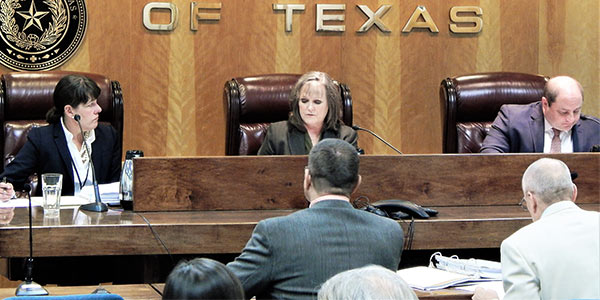By Tom Kleckner
Having survived record temperatures despite slim reserve margins last summer, ERCOT is preparing to take on the Texas heat again in 2019 with reserve margins that have shrunk even further.
The grid operator said in December that canceled gas projects, other delayed projects and increasing demand from oil and gas production had reduced its reserve margin to a historic low of 8.1%. (See ERCOT Predicts Tight Reserve Margin for 2019.)
ERCOT said it will have more than 78 GW of operational capacity — 600 MW more than expected last May — available this summer to meet projected demand of 74.9 GW. ERCOT had an 11% reserve margin last summer, when it met a record peak of 73.5 GW and 13 other demand intervals above the previous high without resorting to emergency actions.
The reserve margin is expected to grow to 12.2% in 2021, within reach of ERCOT’s target planning margin of 13.75%. It is then expected to fall to 7.5% in 2023, when available capacity is projected to flatten, while industrial load growth continues to scale up.

ERCOT faces historically low reserve margins next year in the face of expected increases in demand. | ERCOT
But no worries, says ERCOT. “What we’re encountering now is nothing new,” Pete Warnken, the grid operator’s manager of resource adequacy, said in December.
Texas Public Utility Commission Chair DeAnn Walker has called the 8.1% reserve margin “very scary.” Yet, given a chance to discuss market changes to ensure continued reliability, the PUC in December twice declined to take up the issue during its open meetings. Staff say the commissioners want more time to study stakeholder input, consultant studies and other recommendations, and that they want to “get it right.”
ERCOT’s energy-only market was supposed to incent new generation. Rather than finance new plants on the backs of the ratepayers, the Texas model shifts the risk to investors who might benefit from high power prices.
However, ERCOT’s wholesale prices are among the lowest in the nation, hovering around $25/MWh the last few years. Uneconomic coal-fired plants — like Luminant’s three last year — have closed down or will close down. CPS Energy’s announced shutdown of J.T. Deely at the end of 2018 means almost 5 GW of coal generation have been taken out of the market in the last two years.
Power producers want to increase the payouts from ERCOT’s operating reserve demand curve (ORDC), which provides a price adder during periods of generation scarcity. During an October workshop on electricity prices, Exelon said the change would result in an annual $4 billion increase in electricity prices.
“Prices have to go up. They do!” Bill Berg, Exelon’s vice president of wholesale market development, said at the time. Without the increase, he said, prices won’t support the needed investment.
That $4 billion number has been thrown around by opponents to ORDC changes, which include consumer advocates and the conservative Texas Public Policy Foundation.
“Let the market work,” urged Bill Peacock, the foundation’s vice president of research, in a Dallas Morning News op-ed.
Former FERC Commissioner Pat Wood, who also chaired the PUC when ERCOT’s deregulated market was established in 1999, doubts the $4 billion figure, saying that is “nowhere near” the necessary cost. Wood says “the cheapest and most market-oriented way” to plan for the future is to continue to rely on the ORDC.

The Texas PUC faces tough discussions on the ERCOT market this year. | © RTO Insider
The PUC is also pondering whether to incorporate marginal line losses into how it allocates transmission costs among power generators, an idea being pushed by NRG Energy and Calpine.
Unlike other states, Texas shares the cost of lost electricity among all generators evenly. The allocation process and nearly $7 billion worth of transmission infrastructure has resulted in Texas, with nearly 23 GW of capacity, becoming the top producer of wind energy in the U.S.
Critics say the marginal line-loss proposal would suppress the continued development of wind and solar projects, which far outnumber gas generators in ERCOT’s interconnection queue.
While the PUC weighs which, if any, changes to make, Texas policymakers could also have a say. The 86th Texas Legislature will open for business on Jan. 8 and will end its biennial session May 27.
Legislators have already filed more than 100 bills that could affect the Texas energy market and its consumers. Many of those will inevitably die, but one to watch is Senate Bill 76. The legislation would create a Grid Security Council comprising appointees by Texas Gov. Greg Abbott, including ERCOT representatives, to monitor issues that touch on grid security.



